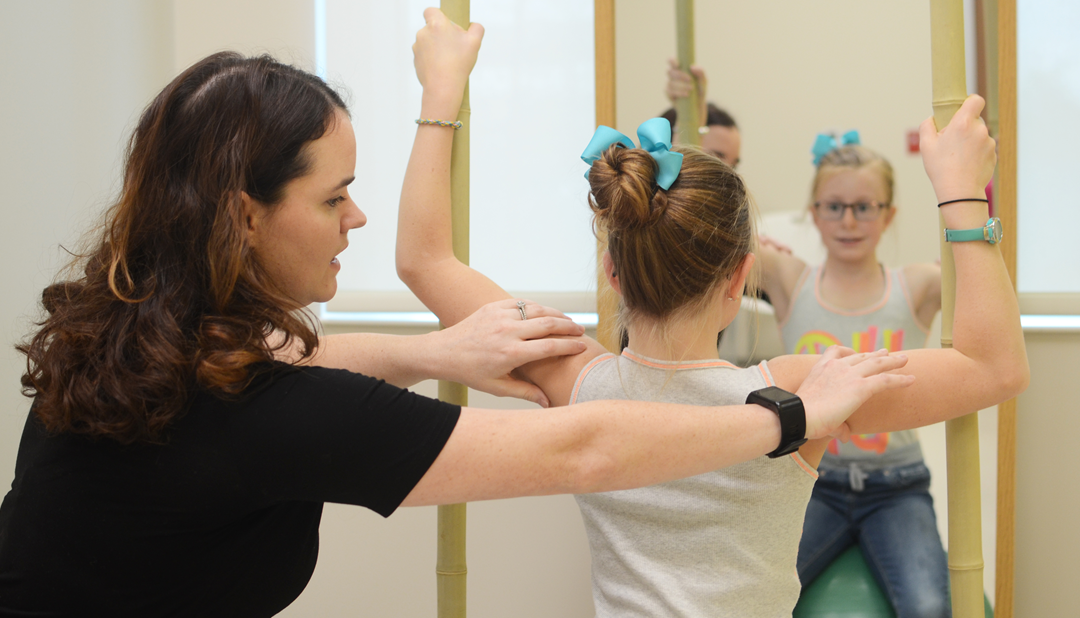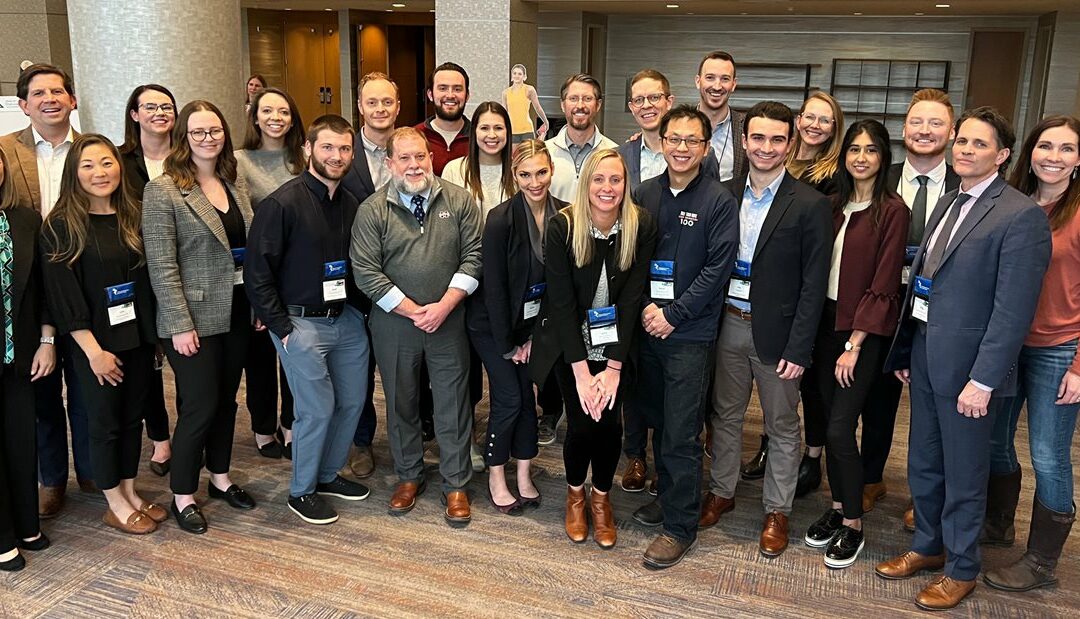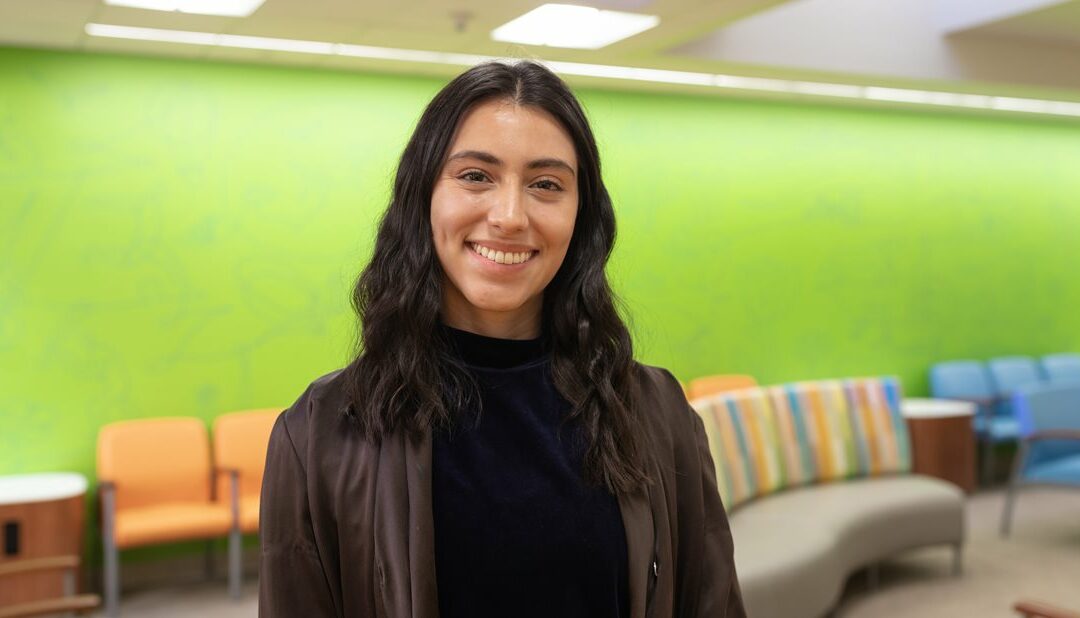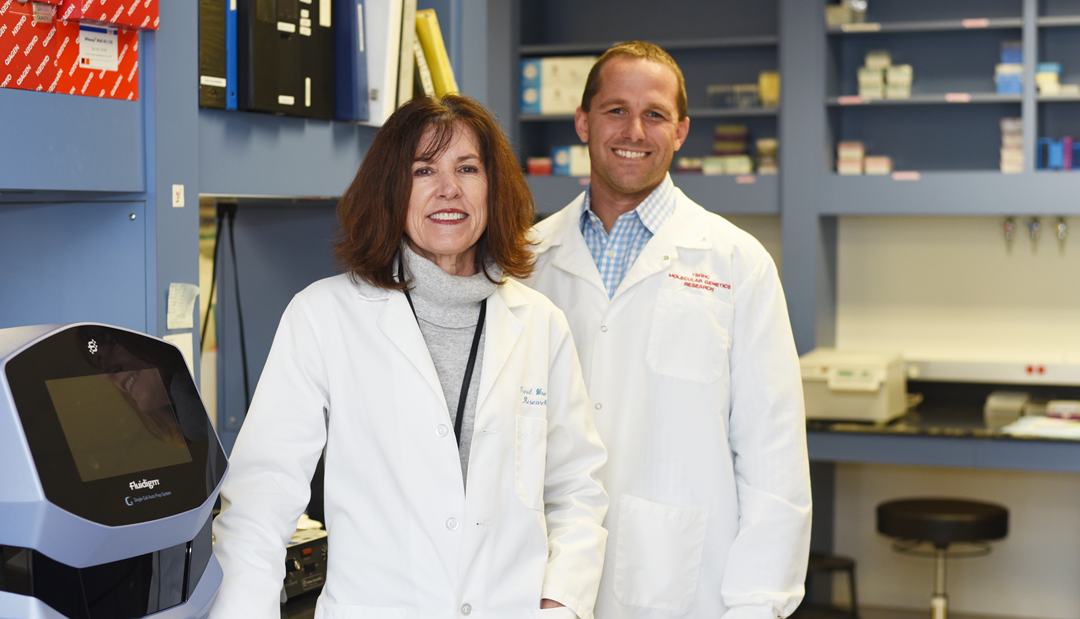
Sports Medicine Research Featured at National Meeting
AMSSM Grant-Funded Project Presented by Lead Investigator
Jane S. Chung, M.D., is conducting a study with the Movement Science Lab team to evaluate movement in pediatric ballet dancers. The larger project includes evaluating demographics, surveys and movement data to determine how ballet dancers respond to training demands of the art. The project presented at this event is titled, “Athletic identity and Injury Patterns in Pediatric Ballet Dancers,” and began to explain how ballet dancers think about their identity as an athlete and found that pediatric ballet dancers, particularly those who trained more and reported a prior history of injury strongly identify with their sport.
Sport-Related Concussion Projects Presented by Trainees
David Mikhail, B.S., is a medical student at UT Southwestern Medical Center who presented “A Longitudinal Evaluation of Differences Between First and Second Concussion Among Pediatric Patients.” In collaboration with faculty mentor Shane M. Miller, M.D., David reviewed 31 pediatric cases in The North Texas Concussion Registry (ConTex).
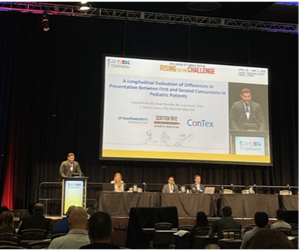
Comparing variables between sport-related concussions within and between patients, the study aimed to identify the effects of a second concussion on young athletes. Findings included:
- Pediatric patients presented similarly following first and second concussion and demonstrated similar time to return-to-play.
- Neurocognitive abilities were not shown to be negatively impacted by a subsequent concussion.
Also representing data from the ConTex registry, Joshua A. Beitchman, M.D., M.B.S., UT Southwestern Medical School second-year resident in pediatric neurology, presented “Endophenotype presentation of athletes with concussion contingent upon sex and time since injury.” Working closely with his mentor and pediatric sports neurologist, Mathew Stokes, M.D., Dr. Beitchman, used a complex system called phenotyping to begin to explain the very difficult task of identifying treatment strategies earlier in the care of concussions. He says, “since concussed athletes experience symptoms differently based on sex and time since injury, predicting outcomes or the prognosis is challenging.” This study is making progress on these challenges in treating athletes with a concussion. A specific direction coming out of this effort is to further evaluate how mood and sleep affect recovery and learn interventions that will address these successfully in this population.

Pediatric Musculoskeletal Ultrasound Expert Shares Results of Novel Study
Sports medicine physician Jacob C. Jones, M.D., RMSK, presented “Increased Ultrasonographic Humeral Retrotorsion in Young Overhead Athletes with Little League Shoulder or Elbow.” This study adds to a small, but growing volume of evidence in the use of musculoskeletal ultrasound in the evaluation and research of pediatric sport-related conditions.
Comparing the shoulders of throwing athletes with and without shoulder or elbow pain with similar athletes in other overhead sports such as gymnastics, the study aimed to describe how the bone is remodeled, or changed, with a high volume of throwing. This study will aid in the understanding of growth-related, training-related and sport-related changes in the shoulder with sports that have a high volume of throwing such as baseball. In particular, studies like this will help to understand why some athletes develop pain with these activities and some do not.
